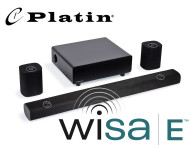Wireless audio is one of the most fascinating areas of technology and one that I have been following closely and writing about for quite some time now. Since joining audioXpress in 2013, I wrote extensively about the many key technologies that were revolutionizing home entertainment, including a complete Standards Review series titled "Wired-Quality Sound Without the Wires" (October 2014 to May 2015) where I revisited all the foundational technologies, wireless personal audio networks over Bluetooth, Wi-Fi, and all the proprietary protocols that existed then, including the first efforts in multizone and multiroom including AirPlay and Sonos.
2014 was an exciting time in wireless audio and a lot was happening on multiple fronts, but unfortunately, things did not evolve precisely the way all the companies involved predicted. To recap on everything that happened on that front, and the state of the industry, I can strongly recommend the two Market Updates that audioXpress featured in the November and December 2022 issues. Those articles recap the previous 10 years of the technology and include complete updates on current Bluetooth technology and the transition for audio streaming from Classic Bluetooth to LE Audio, followed by a complete overview of wireless audio solutions over Wi-Fi and emerging technologies in the December 2022 issue.
One of the topics that I still intend to explore in more detail is multichannel wireless audio solutions, which is an area that surprisingly has not happened until now, at least from a mainstream consumer electronics perspective.
Actually, we are still struggling to do wireless stereo properly to two separate devices, as anyone who has tried to pair two wireless speakers over Bluetooth as a stereo pair has found out. And frankly, much of the excitement around Bluetooth LE Audio and Auracast results from the fact that those updates promise a platform that will be able to do stereo streaming to separate left and right receiving devices (true wireless stereo) and do broadcast - one source to many receivers.
Basically, this last one is the same functionality that became available many years ago in the SKAA Wireless Audio proprietary technology developed by Canadian firm Eleven Engineering. SKAA is today available in numerous products, which receive audio via Wi-Fi or Bluetooth and then transmit using SKAA to multiple receivers.
Other earlier attempts to implement the functionality over Bluetooth have been demonstrated by companies such as Tempow, meanwhile acquired by Google. Their first product, the Tempow Audio Profile (TAP) was an updated Bluetooth protocol allowing any Bluetooth chip to stream audio on multiple Bluetooth audio outputs simultaneously. It was a 100% software solution and worked with any brand of Bluetooth speakers, on any chip, and its underlying IP is found in today's Auracast.

Multichannel Wireless Audio
To do wireless multichannel, accurately reproducing existing surround, immersive, and spatial audio formats is a completely different beast. Many other problems are involved, depending on the source of format decoding and streaming, and overall control of the experience.
Efforts to deliver high-quality wireless audio for multichannel home systems have been evolving for some time, with WiSA - the Wireless Speaker and Audio Association - leading in that space. And yet, although I've addressed WiSA in my report 10 years ago, for reasons that are hard to explain, the technology didn't scale as expected. One of the key reasons being that home cinema also didn't evolve much, with audio manufacturers still heavily traumatized by the debacle of Home-Theater-in-a-Box systems, and consumers remaining largely indifferent to the virtues of even the basic 5.1 surround sound systems, struggling with the inconvenience of spreading wired speakers in constrained living rooms.
WiSA was designed to solve all that - as Bang & Olufsen, one of the earlier adopters of the technology demonstrated successfully - but thinner LED and OLED TVs have created the need for soundbars, and consumers now associate the cinematic sound experience to Dolby Atmos, immersive formats and "spatial."
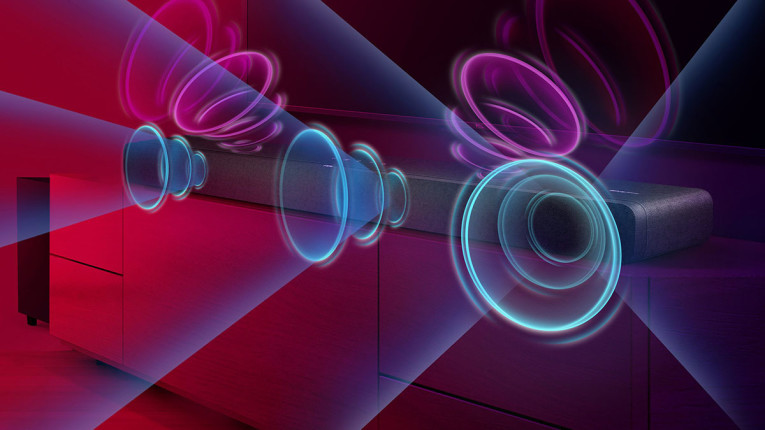
Anticipating this trend, the few remaining contenders in wireless multichannel audio were forced to rethink their approach. WiSA, the Wireless Speaker and Audio Association, a wholly-owned subsidiary of Summit Wireless Technologies (now foolishly rebranded WISA Technologies), announced plans to integrate WiSA’s multichannel wireless audio capabilities into existing TV sound chipsets. And for the past four years, WISA has been working on three fronts to expand its multichannel wireless audio technology.
From one side, expanding the proven WiSA eight-channel wireless audio system to support Dolby Atmos and other immersive audio formats, now rebranded as WiSA HT (for Home Theater). This proven approach creates a dedicated wireless network working on the more reliable U-NII 5GHz spectrum, with a unique signal latency of just 5.2 milliseconds and 1 microsecond channel synchronization. WiSA HT allows expansion to immersive configurations by supporting up to 12 speakers connected simultaneously (adding four height speakers to the standard surround 7.1 configurations).
On a second front, the consumer electronics market has been demanding increasingly more affordable approaches for convenient wireless expansions of TV sound and soundbars. This was the reason why WiSA developed the WiSA Discrete System (DS), a module-based technology that simply transmits up to five channels — four full-range audio channels and one high-fidelity subwoofer channel — of uncompressed 16-bit/48kHz sound over a 2.4GHz Wi-Fi network it creates. This is a simpler implementation that is ideal for soundbar systems. When the soundbar does the core channels connected to the TV or STB source (e.g., HDMI), the five wireless channels become available to supplement the soundbar speakers with immersive channels.
At CEDIA Expo 2023, WiSA and Platin Audio showcased its Milan 5.1.4 Soundbar System, the industry’s first to incorporate WiSA DS Technology to wirelessly power four channels of surround and true Dolby Atmos up-firing audio and a subwoofer from a single transmitter module.
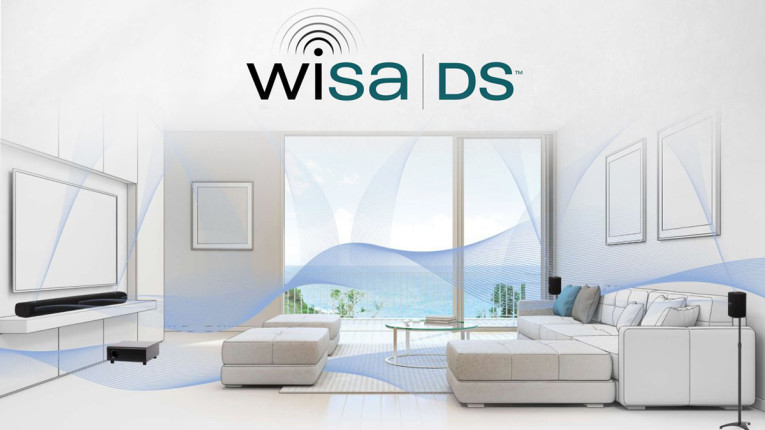
A third approach that WiSA is aggressively pursuing is WiSA E (for Embedded). Using the 5GHz portion of the Wi-Fi band, WiSA E offers high-performance, high-quality wireless audio transmission and reception at an affordable price. It supports multichannel audio configurations transmitting uncompressed 24-bit/48kHz audio with a fixed latency of 20 milliseconds and tight channel synchronization. The reason why WiSA E is causing real excitement in the consumer electronics industry, is that it can be implemented both as a plug-and-play module or as an IP/software license, enabling brands to embed WiSA E software directly into compatible SoC TV platforms.
LG Electronics has been a strategic partner for WiSA since it announced the adoption of WiSA (HT) across all its display product ranges since 2019, but the WiSA DS module was also integrated into other TVs, including from TCL, in a sign of growing support from TV manufacturers to this type of technology. The clear advantage is to have the highest-quality immersive audio experience possible with external speakers, all from a wireless connection, originated directly by the TV and using standard Wi-Fi - no need for external transmitters, TV dongles, and AV receivers.
This is a similar approach to what has been actively pursued by DTS with its Play-Fi technology.
The advantage of having these technologies "embedded" in the TV is that other companies, including speaker companies, can now focus on designing compatible wireless speakers for the home that extend the experience. By incorporating the receiving Wi-Fi modules in each speaker, they are more easily able to dispute the living room, and eventually expand built-in features to smart home integration.
And with the very fast adoption of Wi-Fi 6 and 6E into the homes - not to mention upcoming Wi-Fi 7 - the possibilities will continue to expand as the experience improves with faster speeds and even lower latency.

Enter Dolby Atmos
Now that both companies have perfected an approach to effectively transmit multichannel wireless audio over standard Wi-Fi networks, and now that both companies are working toward the goal of having its technology directly embedded in TV SoCs, the problem that both WiSA and DTS have faced is that the bar has been raised even higher. The consumer electronics industry is now essentially selling "spatial audio" experiences and Dolby Atmos format support.
As always, the industry is moved by these trends, and currently no one wants to sell "just surround" and multichannel formats. Everyone is selling object-based spatial audio, starting with the streaming services. And from an earlier focus on increasingly sophisticated soundbar designs as being the natural sound extension for incredibly thin TVs, the CE industry is now focusing on converting smart TVs into a portal to aggregate services and sell subscriptions (a vision that Steve Jobs anticipated in his late days) and consequently building even more powerful platforms with much more powerful processors.
Leading the way, Dolby is successfully spreading Dolby Atmos support across all brands and in all devices and has even successfully created a Dolby Atmos Music trend with the support from Apple.
Dolby Atmos is naturally a dilemma for a company such as DTS, which continues to pursue its format ambitions with DTS:X, competing directly with Dolby, but not achieving a fraction of the consumer awareness that Dolby Atmos has already conquered.
So, the challenge suddenly becomes how to achieve a convincing Dolby Atmos reproduction in any living room, with the signal originating from a TV, with the expanded channel requirements? A first and most obvious solution is to connect the TV to a soundbar via HDMI, which would relieve the wireless needs to less channels, given that today's soundbar designs are able to effectively generate the three frontal channels plus two up-firing height channels, while providing a convenient wired connection to one or two subwoofers.
With soundbars increasingly designed to generate a full immersive soundfield on their own, including up-firing channels - and achieving very convincing results, it becomes easier to simply place two additional wireless speakers to reinforce the spatial field laterally, while two rear satellite speakers might even offer two more up-firing channels on top, creating an effective number of four height channels in the room. Four wireless speakers, handling six channels, to complete a convincing experience, while maintaining a reasonable arrangement for most homes.
WiSA is working on a convincing demonstration in that direction for CES 2024, in direct cooperation with OEM/ODM partners, and with LG and other TV manufacturers.

DTS Play-Fi Immersive Home Theater
All the while, DTS demonstrated a similar concept in partnership with Philips (TP Vision) and its Play-Fi Home Theater for Speakers. Originally launched in 2021 with support for 5.1 surround sound, the solution, based on the latest generation Play-Fi technology introduced in TVs, received the CES 2023 Innovation Award in the Streaming category.
Basically, Play-Fi Home Theater allows consumers to create their own home theater using any number of Play-Fi products as building blocks, with up to two subwoofers added to soundbars or stereo speaker configurations, and optional satellites added for up to 7.2.4 configurations.
Of note, the 2022/2023 demonstrations already used industry-standard Wi-Fi, re-using the Wi-Fi radio built into every smart TV, streaming PCM 16-bit/48kHz audio to the end points, which included Philips Fidelio Soundbars, Subwoofers, and Speakers. Already at IFA 2023 and CEDIA 2023, DTS expanded the solution to 12 channels, to convincingly enable playback of immersive sound formats such as DTS:X, Dolby Atmos, and IMAX Enhanced from DTS Play-Fi compatible TVs to discrete speaker layouts, up to 7.2.4.
This latest 12-channel solution will be promoted in the market in 2024 as Play-Fi Immersive Home Theater.
In a conversation with Dannie Lau, general manager, DTS Play-Fi during the CEDIA 2023 show, it is clear that from the moment that the support to DTS Play-Fi becomes available in the latest generation TVs (2023 models onwards), consumers will appreciate the ability to customize their home cinema configurations from a simple wireless soundbar connection with or without subwoofer, to a truly immersive experience with four or more discrete speakers, and two subwoofers.
DTS Play-Fi even offers the option to use the TV’s internal speakers as part of a DTS Play-Fi Immersive Home Theater system. The wireless sound will work from all TV video sources including wired inputs (e.g., HDMI), on-board streaming apps, and wireless streaming protocols such as AirPlay and Chromecast. And consumers will be able to mix-and-match DTS Play-Fi compatible soundbars, speakers, subwoofers, and amplifiers, regardless of the brand - an approach that DTS has followed since the early days of the technology. Any active speaker used since 2021 for Play-Fi Home Theater can be upgraded to be part of an DTS Play-Fi Immersive Home Theater system.
As Dannie Lau proudly notes, since DTS Play-Fi was launched there have only been two generations of Play-Fi modules, and even a 2023 Play-Fi enabled 2023 TV will be able to support wireless streaming to early Play-Fi systems, since the original Phorus smart speaker of almost 12 years ago.
Play-Fi also works across various TV operating systems and supports all leading TV system-on-chip solutions, utilizing the same Wi-Fi radio already built into any smart TV - no additional hardware modules required. Active speakers will just need to be equipped with a DTS Play-Fi module.
TPV (Philips) will be the first partner to launch the latest DTS Play-Fi Immersive Home Theater enhancements on select 2023 Philips TVs, which are expected to be released in 2024. Additionally, all DTS Play-Fi compatible TVs also offer whole-home capabilities including multi-room music, and compatibility with most music services from around the world via the DTS Play-Fi mobile app. CES 2024 will be a decisive moment for DTS to announce expanded partnerships to increase awareness of this new approach to the wireless home theater.

Fast-Moving Landscape
The challenge, it appears, is that the largest consumer electronics manufacturers in the TV space are clearly aware of the power embedded in their latest smart TV platforms and might be tempted to promote their own alternative, proprietary technologies for wireless audio. Of course, they will naturally struggle to do multichannel wireless for home theater, due to both existing IP, and the complex latency/synchronization issues that WISA and DTS Play-Fi have long solved.
A predictable scenario is that even TV manufacturers that license the technology will not consider promoting either WiSA or DTS Play-Fi directly and will just promote their own built-in features in their latest TV models - which will not help to promote the concept as such. We've seen this happen before.
Or worse, TV manufacturers will launch their own branded wireless speakers that use the technology but are marketed as bundles of accessories sold with new TVs, not promoting the interoperability that results from the consumer being able to buy their own WiSA or DTS Play-fi enabled speakers.
And there is always the risk of confusion from similarly competitive "wireless" approaches. A recent example is what TCL announced at IFA 2023, with its Dolby Atmos FlexConnect TV sound, in direct collaboration with Dolby Laboratories.
Dolby Atmos FlexConnect pairs the TV sound system with wireless speakers and "intelligently optimizes the sound for any room layout and speaker setup." TCL confirmed at IFA that it intends to launch a line of accessory wireless speakers designed to complement its upcoming lineup of TVs with Dolby Atmos FlexConnect.
It doesn't seem that Dolby Atmos FlexConnect will be able to rival the complete multichannel approach delivered by WiSA in the HT, DS, or WiSA E solutions, or by DTS Play-Fi. But the problem, to start with, is in the "Dolby Atmos" name.
For now, Dolby doesn't detail how many wireless audio channels are supported and doesn't even detail format specifics. Basically, it just promotes the ability to complement the sound from the TV speakers with one, two, or three satellite wireless speakers, which will render an immersive soundfield of the sound objects, according to their current position - no consideration for channel position. Something that Dolby can do but any other manufacturers will struggle to achieve if they aim to receive any Dolby stamp of approval.
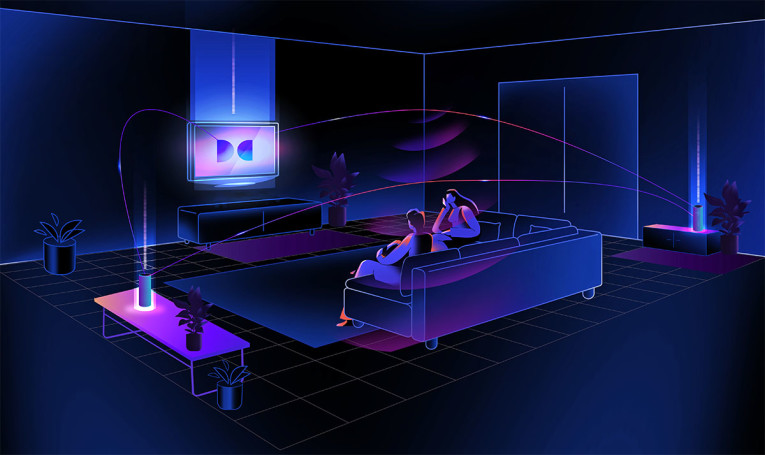
And then there's the "wireless" trend in general, that results from the convenience design-in, causing further consumer confusion.
Interestingly, at CES 2023 LG Electronics confirmed that it is pursuing a dedicated strategy for wireless and introduced "the world’s first wireless OLED TV," a 97-inch LG Signature OLED M (model 97M3), complemented with what it calls a Zero Connect Box, "the world’s first wireless solution capable of real-time video and audio transmission at 4K 120Hz."
The goal is to achieve a TV completely free of cables, except for the power cord. LG wants to have all source AV signals - including gaming consoles and set-top boxes - arriving to the TV wirelessly. Everything connects to the Zero Connect Box, allowing AV transmission at 4K resolution (3,840 x 2,160 pixels) and 120Hz refresh rate, for a distance of up to 10 meters from the screen.
This Zero Connect Box supports a range of connectivity options including HDMI 2.1, USB, RF, LAN, and Bluetooth. To ensure the seamless transmission of image and sound, the box identifies the optimal transmission path and has an adjustable antenna that can be positioned according to the screen’s location. This uses a proprietary wireless AV transmission solution from LG, which potentially can transmit large amounts of data at up to 3 times the speed of the existing Wi-Fi 6E standard, and even supports Dolby Vision and Dolby Atmos.
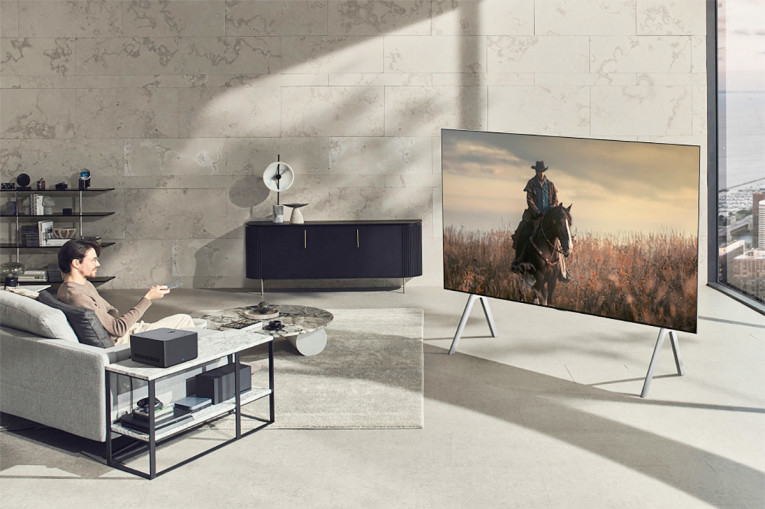
LG doesn't detail what technology it uses to transmit FROM the Zero Connect Box to other peripherals such as wireless soundbars and speakers. We can assume that WISA HT is still supported for wireless speakers. But what if the LG Zero Connect Box uses its own "proprietary wireless AV transmission solution" instead? Particularly if bundled with LG/Meridian branded speakers?
What these and many other related announcements from TV manufacturers confirm is that these companies all understand the potential of smart TVs. And that TVs can easily become the core of the home entertainment hub. Starting with the living room, by replacing all the traditional boxes and separate components (apart from speakers), and eventually connecting wirelessly to the rest of the smart home. And it seems logical to expect that this will become a mainstream trend that the audio industry will have to accept. aX
This article was originally published in The Audio Voice newsletter, (#440), October 5, 2023.




